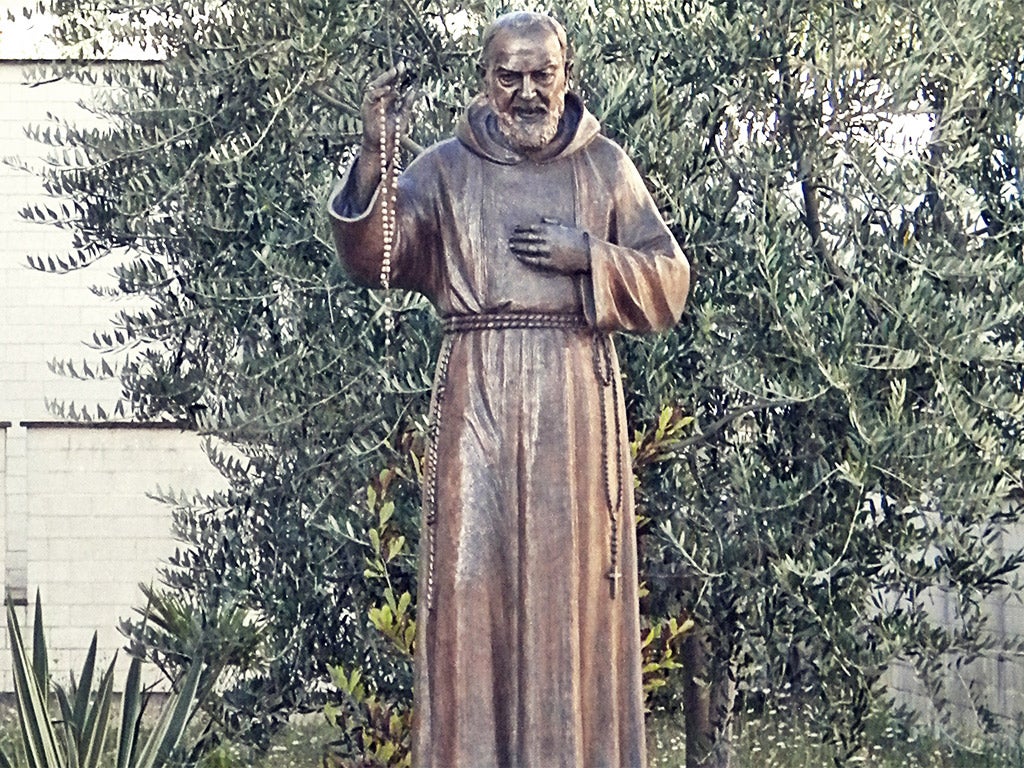Padre Pio statue: Italian village to spend €150m on 280-foot shrine to Catholic saint
However Olgliastro Cilento's town council estimate the money would more than pay for a small hospital or a great many food parcels for the poor and dispossessed, to whom the famously ascetic monk devoted his life

Your support helps us to tell the story
From reproductive rights to climate change to Big Tech, The Independent is on the ground when the story is developing. Whether it's investigating the financials of Elon Musk's pro-Trump PAC or producing our latest documentary, 'The A Word', which shines a light on the American women fighting for reproductive rights, we know how important it is to parse out the facts from the messaging.
At such a critical moment in US history, we need reporters on the ground. Your donation allows us to keep sending journalists to speak to both sides of the story.
The Independent is trusted by Americans across the entire political spectrum. And unlike many other quality news outlets, we choose not to lock Americans out of our reporting and analysis with paywalls. We believe quality journalism should be available to everyone, paid for by those who can afford it.
Your support makes all the difference.Almost 50 years after his burial, the Italian saint Padre Pio is proving more controversial dead than alive. The new dispute centres on plans by a remote southern Italian village to build a 280-foot high statute of the Franciscan monk, at a cost of €150m (£115m).
The giant shrine, with a large space for the pilgrims to gather and worship underneath, would be only 30 feet shorter than the entire Statue of Liberty – including its base and foundations – and is designed to put the village of Olgliastro Cilento on the tourist map.
Unsurprisingly, some residents are irked by the project given their town’s lack of properly surfaced roads. Community spokesman Gerarda Ariana, 45, said on Facebook: “Let’s talk about priorities. They want to construct fantasies with a statue of a charlatan… while we haven’t got a functioning water supply.”
The town council’s estimated price of €150m would more than pay for a small hospital or a great many food parcels for the poor and dispossessed, to whom the famously ascetic monk devoted his life. Phone calls by The Independent to the town hall went unanswered, and the council’s website was not working.
Newspaper reports said the administration hoped to draw on a combination of local and state funds, EU grants and donations from private donors and charities.
The monk, who died in 1968 and was canonised by Pope John Paul II in 2002, is said to have performed several miracles, including healing burns with chestnuts and appearing in two places at once. Despite claims that he had used acid to fake his own stigmata, more than 100,000 attended his funeral.
Join our commenting forum
Join thought-provoking conversations, follow other Independent readers and see their replies
Comments